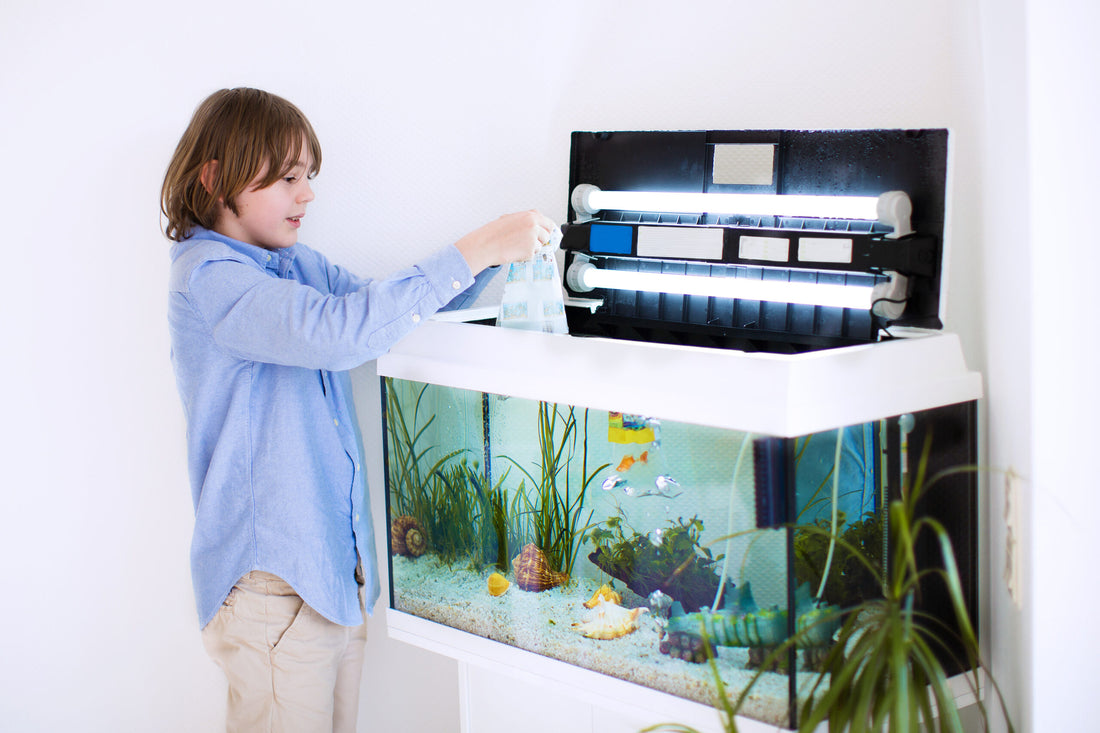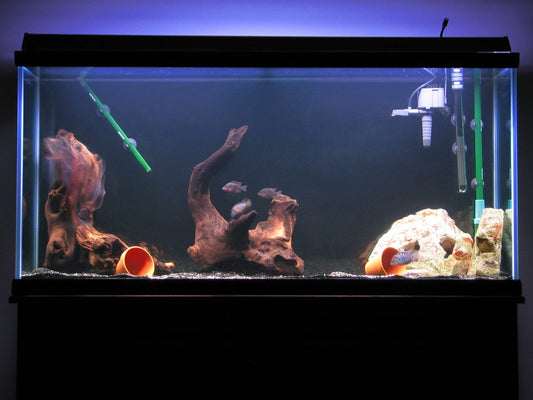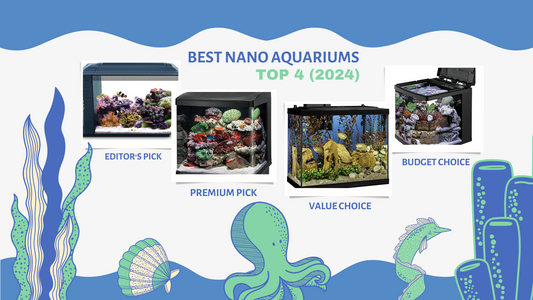A Step-by-Step Guide to Cycling a Fish Tank

Most hobbyists have heard about the importance of a cycle in setting up a new fish tank. But perhaps you’ve been confused by what that might be. To help you, I’ve created this guide on ensuring your tank is problem-free from the very beginning!
What is the Aquarium Nitrogen Cycle?
Aquarium cycling is a process that happens in every fish tank, whether you take an active part in it or not. It is one of the most important steps towards making your tank a healthy ecosystem for your fish.
While you, your filter, and other supporting agents help, it’s the microorganisms that do much of the heavy lifting here! The nitrogen cycle is the process by which molecules with nitrogen are detoxified and exported from the system.
Nitrogen is essential to plant and animal health but it can take on toxic forms. The worst of these is ammonia (NH3+). This ion forms through the decay of proteins and other organic compounds in your water.
Dead fish, fish food, and fish waste are all a major source of ammonia. Fish also excrete ammonia directly through their gills. In an aquarium that has not been cycled, the compound accumulates. Since there is no safe level for ammonia concentrations, the water quality becomes worse with each passing day.
The challenge of keeping fish alive before cycling fish tank procedures were understood was called “new tank syndrome.” But eventually, a tank stops being new and fish are able to survive! Why is that?

Ammonia and Nitrate + Beneficial Bacteria
In nature and an established tank, there are healthy populations of nitrifying bacteria. There are multiple families of these microorganisms. And several feed on ammonia. They then release it as nitrite (NO2-).
Nitrite is less toxic than ammonia. But it is still not good for fish health and nitrite levels should be as close to 0 ppm as possible. Fortunately, another class of nitrifying bacteria feed on nitrite. Reducing it further into nitrate (NO3-).
Nitrate is much less toxic than ammonia and nitrite. Nitrate levels can be allowed to get fairly high before corrective action is needed. Concentrations of 10-30 ppm are well tolerated by many fish with no side effects.
There is a class of beneficial bacteria that eat nitrate. They release nitrogen gas (N2) as waste, which is released into the atmosphere. Thus closing the loop of the nitrogen cycle. But these bacteria can’t live in large numbers in fish tanks.
They are anaerobic microorganisms, meaning they are killed in the presence of oxygen. In nature, they live in mud, under rocks, and in other safe, oxygen-free zones. A fish tank is too well-oxygenated.

So you’ll need to step in and remove nitrates through water changes. If you keep live plants they also use it (as well as ammonia and nitrite) as fertilizer!
Cycling Fish Tank: Step-by-Step
Now you understand the importance of controlling ammonia, nitrite, and nitrate through cycling. So how do we cycle a new aquarium for freshwater fish?
Step 1: Set up the tank as planned. Fill the aquarium with tap water and then treat it using dechlorinator. Chlorinated water is toxic to both fish and microbial life. Plug in your heater, filter, and other life support systems.
Step 2: Next, we want to add fish to the new aquarium. But we don’t want to hit full carrying capacity right away. The tank has no beneficial bacteria inside of it to process ammonia. That’s how you end up with new tank syndrome.
Instead, we want to add just one or two fish. They will provide a small but steady stream of ammonia. Which will feed the starter culture of beneficial bacteria. These germs are everywhere; in the air, in dust, in the soil…So if you aren’t in a rush to get more new fish then you can rely on nature to provide this critical ingredient.
Step 3 (optional): If you want to speed up the cycling process, then purchase a bottle of cultured bacteria! You can reduce the cycling period to just a few days, rather than weeks of having to wait.
An established tank in your home can be another source of bacteria. By adding some of the water and filter media from that tank, you are seeding the new tank with microorganisms.
Step 4: Each day, monitor ammonia and nitrite levels. You should see an initial increase in ammonia. Once your first set of nitrifying bacteria is established they will start to convert that into nitrite. Once you have measurable nitrites, start testing for nitrates in your aquarium water. If ammonia and nitrite become too dangerous, perform water changes. Even hardy fish will be stressed if they have to live with these pollutants for too long.
Step 5: Once nitrates are starting to accumulate, test the water to ensure that ammonia and nitrite levels are decreasing. At this point, it’s safe to begin adding fish. Add a few more and then continue to monitor water quality every dew days until you reach maximum carrying capacity!
Fishless Cycling Process

There is another way to cycle a fish tank: fish less cycling! Instead of adding living fish that create waste, you can use bottled ammonia as fuel. The fishless method ensures no pet is stressed or killed by elevated ammonia levels. It’s just as effective at controlling ammonia and nitrites. Make sure to use pure bottled ammonia designed for fishless cycling.
Many ammonia-based cleaners have surfactants, perfumes, and other toxic additives.
How Long Does It Take To Cycle a Fish Tank?
An aquarium cycle will be complete after you wait three to six weeks. It depends on the size of the tank, the water temperature, and what sort of habitats are available for bacteria to form colonies.
You can make sure the tank and filter are cycled properly by using the right media. Bio balls, bio wheels, and other biological filter media are an essential ingredient. Helpful bacteria live in your water and gravel. But the surface area filter media provides for colonies is immense.

Conclusion
If you’ve made it this far then you now understand the process called aquarium cycling. It is the process that makes it safe to add pet fish to a tank. A filter and a water change do much to keep fish healthy. But it’s living microbes that ensure pollutant levels remain low at all times!
Want More Help?
Make sure to check out our new course on cycling an aquarium at Aquarium Class! We‘re ready to help you cycle your tank as quickly as possible, with comprehensive lessons, live Q&A sessions, and even an exclusive private group for members to ask questions. I know you’ll be happy when you’ve signed up!
No comments






comments